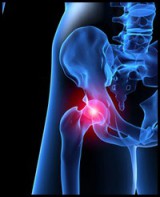Spinal cord injuries are among the most serious and life-altering injuries a person can sustain. The spinal cord, a complex bundle of nerves, is the primary pathway for communication between the brain and the rest of the body. When it’s damaged, a patient could be...
People who suffer from varicose veins, chronic venous insufficiency (CVI), and other related health conditions know that their symptoms involve more than just cosmetic concerns. They also frequently cause pain, swelling, and more serious health problems. For these...
Our smartphones, tablets, and laptops have connected us to the world in ways that we could never have imagined. We carry our offices, our social lives, and our entertainment with us everywhere we go. But this constant connectivity often comes with a trade-off, one...
Why Would I Need to See an Orthopaedic Doctor?

Do you suffer from long-term tendon, muscle, or joint pain? Do you have chronic back problems? There are more than 28 million Americans who develop some type of musculoskeletal problem each year. These problems include, but are not limited to, sprains, strains, and overuse injuries, as well as knee, shoulder, and back pain.
Many people believe that the only solution for these issues is medication. They may have never asked themselves the question: Do I need to see an orthopaedic doctor?
An orthopaedic doctor specializes in issues, diseases, and injuries pertaining to the musculoskeletal system. These doctors play a critical role in the diagnosis, treatment, prevention, and rehabilitation of musculoskeletal conditions. Orthopaedic doctors work in both hospitals and specialized practices to treat infections, sports injuries, broken bones, joint problems (e.g., arthritis), congenital conditions, degenerative conditions (e.g., osteoporosis), and bone tumors. They handle everything from minor issues such as a sprained ankle to complex procedures and surgeries such as a hip replacement.
If you are experiencing any type of pain in your ankles, knees, hips, shoulders, or back, you should consider seeing an orthopaedic surgeon. Symptoms may include any of the following:
- Difficulty using that particular body part to perform daily functions (e.g., walking up the stairs or carrying grocery bags)
- Pain in muscles, tendons, or joints that persists for more than a few days
- Joint pain that becomes more intense during periods of rest
- Swelling or bruising around the joint or the location of an injury
- Limited range of motion, such as an inability to straighten the back
- Joint deformity
- Signs of infection including heat, inflammation, fever, and/or redness
- Any unusual symptoms in the pain region
Orthopaedic doctors use surgery as a last resort for musculoskeletal issues. They do everything that they can to delay it as long as possible in favor of less invasive treatments such as medication and physical therapy. When these treatments no longer provide relief for pain and other symptoms, they may recommend surgery. Some of the most common surgeries that orthopaedic doctors perform include back surgery, and ankle, knee, shoulder, and hip replacements. They also perform a variety of arthroscopic procedures, which allow them to visualize, diagnose, and treat problems inside of a joint.
The earlier you are able to get advice about a musculoskeletal issue, the sooner you may be able to start treating the problem. Early treatment prevents an issue from becoming even more severe. During an initial consultation with an orthopaedic doctor, he or she will isolate the problem, narrow down the cause of the issue, and explain your treatment options. You may also get advice about pain management including medication and/or injections, rehabilitation and physical therapy including a potential time frame, and ongoing

